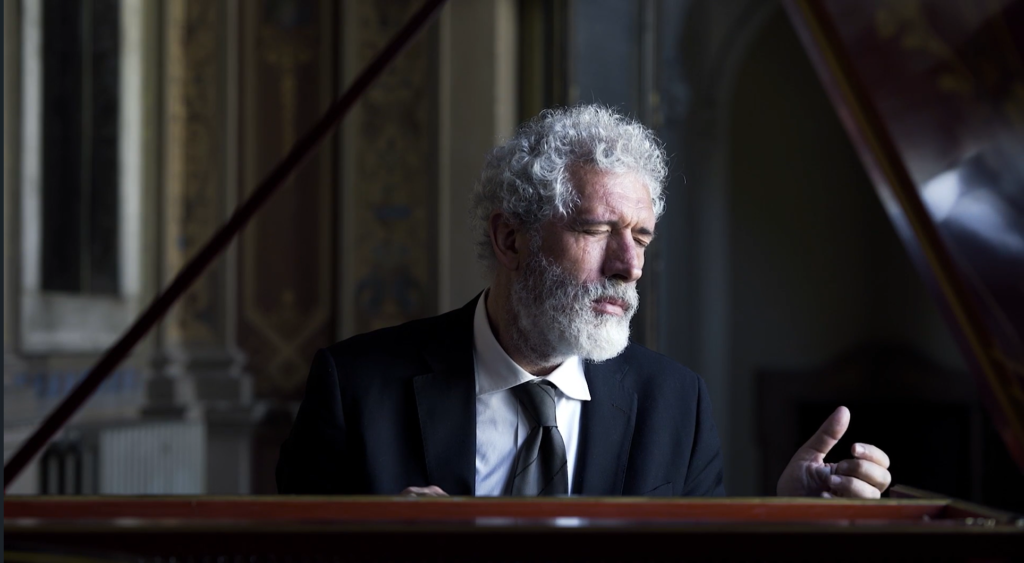
Two Marcos and The Seventh Partita
There are mysterious “coincidences” that sometimes guide us. We need to pay attention to these.
A few years ago I started a novel based on the possibility of there being a seventh keyboard partita of Johann Sebastian Bach. What would it be like to find it? Old and “missing” manuscripts turn up all the time and in this digitally connected world why shouldn’t someone like me find it?
There is a not-so-secret that shows Bach composed seven keyboard partitas in his set that comprises volume I of his Clavier-Übung. But this set contains only six partitas. That there may be an unknown Seventh Partita comes from the simple arithmetic decoding of the known six Partitas: The expanding intervals between each of the preceding six suggest another one in F Major that would complete the sequence. Yet, history has not revealed its existence. Or has it?
Lost works of Bach keep turning up in odd places in odd ways. In 2004, parts of an unknown wedding cantata turned up in Japan in the papers of pianist Chieko Hara who had just passed away. In 1974 a retired music professor found that his early publication of the Goldberg Variations was actually Bach’s own proof copy which contained 14 canons on the theme handwritten by Bach on the end pages. Coincidentally, one of these canons is the one Bach himself holds in the famous Hausmann painting of him.
The contemplation of these made me imagine what it would be like to somehow discover the Seventh Partita—how someone like me could be able to make such a discovery. How could some non-professorial, non-professional musician—a regular guy—make such a grand discovery? It was enough of a contemplation for me to write a novel about it, The Seventh Partita.
The mysterious existence of a seventh partita is compounded by the fact that shortly after releasing the set of six Partitas, Bach released another volume of his Clavier-Übung with yes, another partita. Except it’s in the “wrong” key of b-minor rather than the prophesied F-Major. We now refer to this masterful work as the French Ouverture. There is another work in this volume: The Italian Concerto and that work is in the proper key of F-Major but it’s not a partita at all but of something almost opposite in structure and style. It’s also in a key as distant as one can get from b-minor, a tritone away.
Such paradoxes and ambiguities can be irritating in real life but make for interesting questions in a novel. One of the characters in my novel is a rather unlikable harpsichordist. I pulled a name out of the air: Marco Rico. The name resonates so well with history’s Marco Polo, the explorer (or teller of tall tales), and Rico with the brand of reeds that jazz saxophonists in the ads in Downbeat magazine that my dad used to bring home when I was a kid.
But here’s the strange and bothersome coincidence: While I was contemplating and writing the novel, there was another harpsichordist named Marco, Marco Mencoboni, was releasing videos of Bach’s music. And yes, the very same works: The French Ouverture and the Italian Concerto! To emphasize the difference between the two works he recorded them in different venues. And yet again another coincidence: The venue in the Youtube video for Mencoboni’s performance of the French Ouverture matches the description of the apartment where our protagonist Kaden Oshima lives with his magical Pascal Taskin harpsichord. In Mencoboni’s video, a large window is to his left. In my novel, Oshima lives in a small studio apartment with large glass doors to the left that look out over the city of Honolulu. It’s an apartment I once lived in. The video never shows the view, but it could well be the view of Honolulu from an apartment on Thurston Avenue!
Yes, it may be that I had stumbled on these videos while I was writing and named the character after a residual memory. But on reflection and especially after listening again to Marco Mencoboni’s astoundingly beautiful performance of the missing Seventh Partita (aka the French Ouverture), I am overwhelmed by regret at naming my unfortunate character Marco also.
So I am rewriting the novel and replacing “my” Marco with another name. I don’t know yet what that name will be, but there will be no character named “Marco” casting shadows on any other Marco living or dead.
Only you who are reading this, and a few others that may have read the original draft will know what the character’s name was to begin with.
But enough of this chatter. I leave you with master Marco Mencoboni’s profound and beautiful performance of Bach’s “missing” Seventh Partita. (But maybe there is really another partita that is still missing?)
H. Doug Matsuoka
20 November 2022
Alewa, Honolulu
